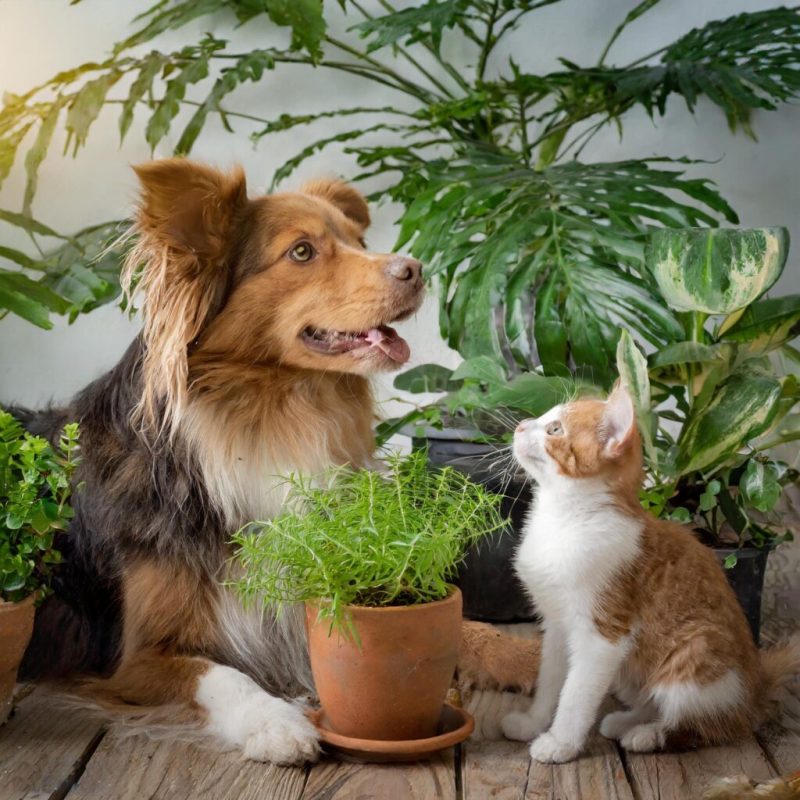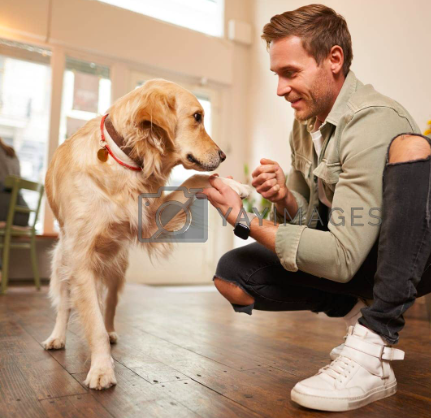Best Dog Friendly Garden Plants – From setting boundaries to protecting your plants, here are our tips for securing your garden.
Gardens can be beautiful, and can inspire dogs. But dogs can be destructive, digging up plants and urinating on the leaves.
Best Dog Friendly Garden Plants

There are dangers in gardening – some plants can be poisonous to dogs and there are other dangers, from strong chemicals to sharp objects. .
Dog Friendly Plants
There are many things you can do to make sure you get along with your four-legged friend, including planting non-toxic plants, creating dog-friendly areas and tending the garden.
Creating different paths in the garden, such as lighted paths and marking or digging play areas, will encourage your dog. A variety of plants can move underfoot, and plants such as succulents and beautiful grasses dance and add flavor.
Angry dogs can damage young plants, or tender plants, by digging or running into them. Plant large, established plants and choose hardy plants such as nepeta, astilbe and hardy geraniums (avoid
Species, can be poisonous to dogs and confuse the common name of geranium). Use hardy plants like viburnum or hollyhocks in the background.
Garden Plants That Are Safe For Cats
Dogs can kill plants. These include chrysanthemum, aconite, buttercup, daffodil, daphne, delphinium, foxglove, hydrangea, oak, tomato, wisteria and yew (Tax baccata). If you see any serious signs and you think your dog may have eaten a plant, take your pet to the vet. Watch our video on plants poisonous to dogs.
Dogs can damage lawns and borders and create a special play area or dig, using sand or gravel. To prevent dogs from crossing your borders, you can make paths in them, or create special borders, such as a low-growing box. Bunk beds are a good option.
You can have a beautiful garden if you have a dog – there are plenty of plants that won’t scare the dogs. These include snapdragons, asters, camellias, roses, sunflowers, elegans, centaureas (cornflowers), impatiens and calendulas.

Some dogs will dig under fences, or escape through fence holes, so keep your boundaries. Dogs can jump high, so make sure your fence is at least 6 feet high if you have a small dog. Always keep the doors open.
Pet Friendly Plants For Your Garden
Make sure your dog doesn’t eat slugs or snakes. Avoid using slug pellets, as they are toxic to all animals. Chickenpox can be obtained by eating slugs, snails and frogs. Symptoms include difficulty breathing, coughing, fatigue and bleeding that lasts longer than usual.
Laundromats can contain harsh chemicals and sharp tools – always clean them.
Avoid using chemicals such as inorganic slug pellets, which can be harmful if your dog eats slugs or snails. Learn how to make slugs and snails in nature. Do not add to water or ponds, as this will tempt dogs to drink from it.
Like chocolate, this chocolate product can be harmful when eaten – and the smell of chocolate is tempting. Use an alternative mulch such as sawdust.
Best Shade Perennials
Dogs can dig up food scraps in compost bins, and they may contain harmful substances. Some foods like avocados, grapes, grapes and citrus can spoil, so make sure they don’t go in your box.
Weeding can cause yellow spots. Teach your dog not to pee on the grass, or later on the ground. Find out more about dog urine on the following pages.
Better safe than sorry If you think your dog has eaten a plant, slug, or bug in the garden and is showing signs if sick, don’t hesitate to take him to the vet.

The July issue of BBC Gardeners’ World magazine is on sale now, buy online or in stores now.
Best Dog Friendly California Vacations For Your Pup
Browse our selection of seasonal gardening gifts from our trusted retailers to stock up on everything you need to grow a garden. beautiful style. It’s a big part of the holidays like cookies and socks. But these plants and other plants that are often used during holidays come with a high risk of curious animals eating leaves, flowers or drinking standing water. And while we don’t want to be afraid of using live plants to decorate your rooms, it is important to know that safe plants are suitable for homes that have beautiful friends and can be protected.
We asked the plant experts in Sale for their advice on safe plants to replace some of the most popular examples being used this season. These recommended plants provide the color and beauty that living plants can have in the winter season and get used to the dark days without worrying about your pets. It’s a quick reference sheet that you can share and dig deeper into the causes and locations of each plant. Explore Sill’s collection of pet friendly plants and learn more about their pet sharing kit.
So, why are these plants a problem for your pet? Here’s the lowdown on why and where these pet peeves occur, and some tips for keeping your pet at its best. (Note – To order Pet Safe Swaps directly from Ciel, just click on any tree name.)
Poinsettia (Euphorbia pulcherrima) has a milky sap that when eaten can irritate the mouth and stomach, and is sometimes fatal. Although this is not a major threat to plants for animals, there are other good options.
Gift This, Not That: 5 Pet Safe Holiday Plants
Enjoy the red at Christmas. Although it can cause abdominal pain if eaten in large quantities, it is not a health hazard to livestock.
This vigorous epiphytic succulent needs bright light and low humidity to do its job. There should be enough lighting in the area of the heat source. Do not drink water; Find out if water is needed by lifting the bag. If it’s clean, water.
) Oils from plants and needles can cause stomach upset in animals if ingested. The biggest concern is that the water in the plant stand may contain oils and chemicals used in plant growth. . Other conifers such as fir and spruce face similar problems.

) when grown indoors, it grows slowly, more than 1 foot per year and reaches a height of 10 feet. We are not saying that it is the only solution, but it is a good option for homes that suffer from animal damage.
From Paws To Plants: Creating A Dog Friendly Garden
The palm tree is known as a type of tree. You may have to experiment a bit before finding the right spot, but this plant does well in a bright spot with plenty of light. Water regularly and often and keep a spray bottle nearby to spray several times a week.
) contains lycorine and other harmful substances, which can cause vomiting, diarrhea, loss of appetite, and abdominal pain, lethargy, and tremors in cats and dogs. The bark of the plant is more poisonous than the flowers and leaves.
The mulberry orchid (Phalaenopsis) flower-like, brightly colored and beautiful Amaryllis Victoria has no side effects when eaten by animals. They can bloom for months and come in a variety of colors to match any room in the house.
Mother orchids like bright light. St. there is an east window; West or south light is good if indirect. When the skin or mold is dry to the touch and the pot feels clear, water your orchid well (if the water is in the drains at the bottom your pot).
Creating A Dog Friendly Garden
) has a white leaf that prevents many animals from eating it, causing damage. However, eating some of the leaves or roots may cause digestive problems, such as vomiting and diarrhea.
The red leaves are beautiful, and while we wouldn’t say they are “good” for Holi, they do have lush leaves – the first thing you want on those cold winter days. beautiful.
It is not the easiest house to age, but you can do it with a few tricks: provide light and no light; Water when the top 1-2 inches of soil is dry; Provide high humidity to keep the leaves moist – keep it moist or place it on a piece of gravel. Easy!

) is poisonous to dogs and cats (whole plant). Eating just a few leaves can cause nausea and diarrhea, fatigue, difficulty walking, fatigue, weakness, and loss of appetite. The long-term effects can be serious.
Five Pet Friendly Indoor Plants
Peacock plant (Calathea makoyana) has long green leaves with deep green color above and below.

